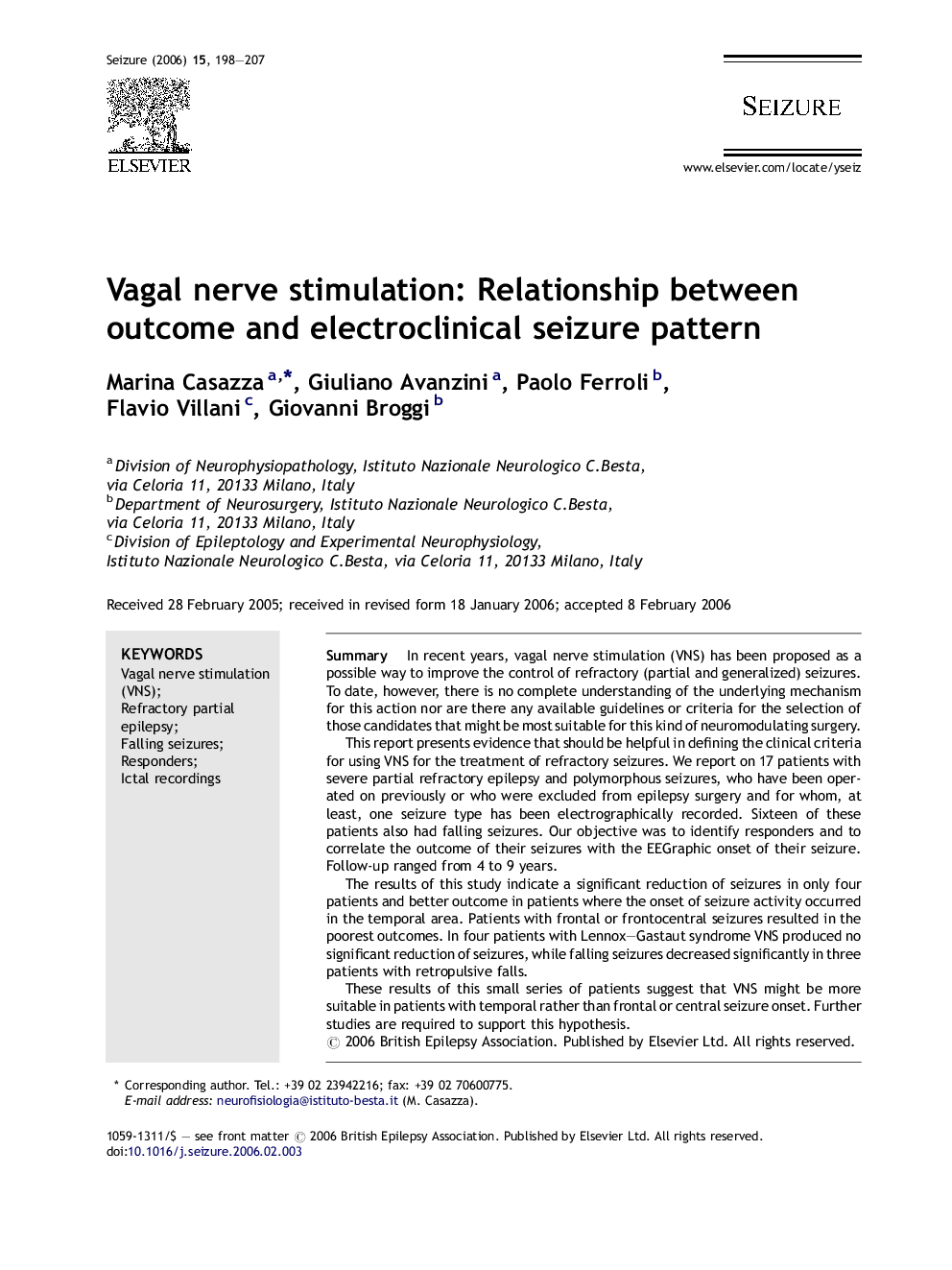| Article ID | Journal | Published Year | Pages | File Type |
|---|---|---|---|---|
| 341286 | Seizure | 2006 | 10 Pages |
SummaryIn recent years, vagal nerve stimulation (VNS) has been proposed as a possible way to improve the control of refractory (partial and generalized) seizures. To date, however, there is no complete understanding of the underlying mechanism for this action nor are there any available guidelines or criteria for the selection of those candidates that might be most suitable for this kind of neuromodulating surgery.This report presents evidence that should be helpful in defining the clinical criteria for using VNS for the treatment of refractory seizures. We report on 17 patients with severe partial refractory epilepsy and polymorphous seizures, who have been operated on previously or who were excluded from epilepsy surgery and for whom, at least, one seizure type has been electrographically recorded. Sixteen of these patients also had falling seizures. Our objective was to identify responders and to correlate the outcome of their seizures with the EEGraphic onset of their seizure. Follow-up ranged from 4 to 9 years.The results of this study indicate a significant reduction of seizures in only four patients and better outcome in patients where the onset of seizure activity occurred in the temporal area. Patients with frontal or frontocentral seizures resulted in the poorest outcomes. In four patients with Lennox–Gastaut syndrome VNS produced no significant reduction of seizures, while falling seizures decreased significantly in three patients with retropulsive falls.These results of this small series of patients suggest that VNS might be more suitable in patients with temporal rather than frontal or central seizure onset. Further studies are required to support this hypothesis.
